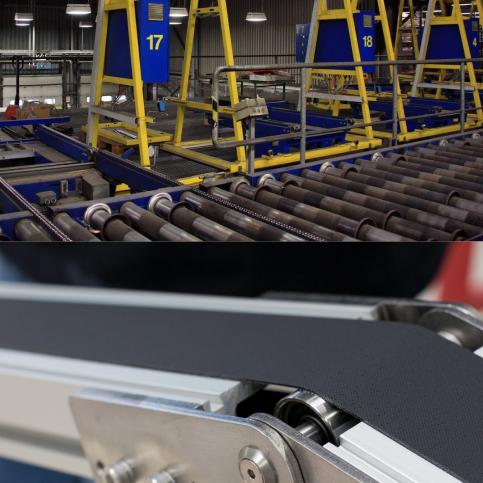
5 Factors To Consider While Choosing Between A Belt Curve And A Live Roller Curve Conveyor
In material handling, belt conveyors as well as live roller conveyors are widely used for myriad applications. A belt conveyor can be defined as a belt connected with two or more pulleys in the form of a loop. The material to be conveyed comes in contact with the belt surface. The conveyor belt, moved by the pulleys, transports the load.
A live roller conveyor uses a series of rollers that directly come in contact with the load. The roller’s surface makes it easier to transport the load across the length of the conveyor. While both types of conveyors have their own pros and cons, choosing one might seem challenging for a particular application.
The problem is compounded even further when curved conveyors enter the equation. Designed to transport goods across curves and turns, the factors for selection can vary in this case. In this blog, 5 such factors pertaining to the curved belt and live roller conveyors will be examined.
How to select a curved belt or roller conveyor
Nature of the object being transported
The shape of the object plays a major role in choosing a curved conveyor. In the case of a curved live roller conveyor, small or irregular-shaped objects can topple or move erratically when travelling. Furthermore, if the objects are too small, there’s an additional risk of falling through the rollers. Hence, in this case, a belt conveyor will be more suitable.
Objects With Non-Flat Bottoms
Loads such as pallets or cardboard boxes with bottoms can be conveyed on both rollers as well as belt conveyors. However, if the bottom is not flat, then transporting it on a curved roller conveyor would be sub-optimal, as it might shift unpredictably. It might even cause a collision between objects if the conveyor is used for accumulation. Using a belt conveyor, on the other hand, might be ideal in this case, as the belt surface will offer adequate friction to the bottom of the load, making it more stable during turns.
Elevation Changes
A combination of incline or decline can also make the selection process more complicated. In this instance, a belt conveyor will be a better choice due to the friction it can offer to the load being conveyed. Hence, with the right speeds, it can safely transport packages across inclines and declines. This lack of friction can make the process a lot less optimal in the case of curved live roller conveyors. While it might make declines a lot smoother, challenges arise when there is a steep incline.
Product Stoppage
In some assembly lines, it is vital to stop a package for inspection, removal or to control the flow of traffic. It can be easily done with curved live roller conveyors. With the aid of steel pins or similar contraptions that can be raised through the gap between the rollers, products can be stopped effectively. This, of course, is only applicable to conveyors where are no elevation changes.
Secondary Operations
The gap between the rollers is also quite useful in cases where a certain package has to be raised above the line for a specific purpose, such as assembly. This is achieved with the help of lift bars that can easily be accommodated between the rollers. Furthermore, these bars also be used to change the placement/orientation of the package on the conveyor.
In this manner, both curved belts and curved live roller conveyors can be selected depending on specific applications.
Our Range Of Curved Conveyors
Norpak Handling also offers curved liver rollers as well as belt conveyors. The salient features of two such models will be examined below:
Heavy Duty Tapered Roller Curve-25-CRRCT:
- Curved conveyor used in conjunction with the 25-CRR straight roller conveyor
- Handles heavy pallets and drums with a maximum load-bearing capacity of 4000 lbs
- The rollers used are tread tapered and are driven by chains
Powered Belt Curves
- A wide range of curvatures is available, ranging from 15 to 360 degrees
- Can handle a load of 40 lbs per linear foot
- For loads heavier than 40 lbs, the conveyor can be accommodated with additional relief rollers
To know more about the different conveyor systems that function efficiently with sharp turns and curves, reach out to us at Norpak Handling. We have been providing businesses throughout Canada with top-of-the-line conveyor belts and conveyor equipment for decades. Get in touch with us today to learn more about how we can craft highly customized material-handling solutions specific to your business requirements.









